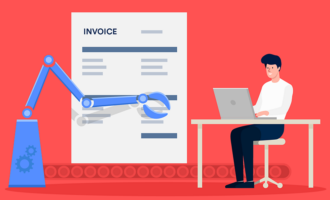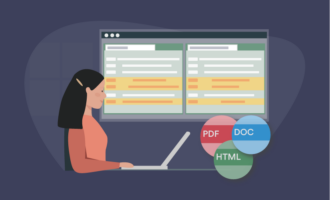If you’ve been researching document automation, you’ve probably come across the term document assembly. People often use these two terms interchangeably. However, there’s a growing difference between them and the types of software they describe.
In this post, we explain what these terms have traditionally meant and how a new generation of software is changing the definition of “automation.” By the end, you’ll be better prepared to understand the differences in document automation solutions on the market.
Document assembly: The core of document automation
Document automation is a broad term many use to refer to software that helps streamline the creation of new business or legal documents by automatically populating document templates with previously existing text or data.
Traditionally, document automation turns commonly used documents — such as contracts or sales proposals — into templates.
When someone needs a new document, such as a new client contract, the document automation software automatically fills in any conditional or variable text in the document. The user typically enters the data through a questionnaire, and the software automatically places the data into a document or document set (or increasingly, it pulls the data from another app or database).
This process of generating new documents with templates is also commonly referred to as document assembly.
According to Aravind S., founder and CEO of document automation software Docupilot, “Document assembly involves a document template and a form, where you can link all the form fields to a document. Where someone fills out a form or interview form, that content will be replaced in the document.”
For most of document automation’s history, the two terms have been synonymous. But a new era of document automation solutions is changing the way people use the terms.
Pro Tip
Automate your document creation process with Jotform’s AI Document Generator for fast and efficient results!
A new era of document automation
Over the past decade, most organizations have increasingly begun using cloud-based software instead of on-premises software. This has led to a change in the way users create, store, and use documents — and it has created new opportunities for automation.
Traditionally, document automation was limited to the actual creation (or what could be referred to as “assembly”) of new documents in applications such as Microsoft Word. After users created documents, they would still need to store, send, or sign those documents — requiring workflows that involve a series of manual steps and different software.
But now popular cloud-based software solutions are becoming increasingly integrated, using APIs and task automation apps — such as Zapier — which give users the power to easily move data between software in ways they couldn’t with on-premises software. This allows for true automation of document workflows between software programs, with document assembly existing as only one step within document automation.
“When people started using web applications such as Salesforce, Zoho CRM, and Airtable, they wanted to integrate document assembly into their workflows, which we refer to as document automation. It’s a workflow involving your day-to-day applications, connected to a document assembly engine,” says Aravind.
So what does this new era of document automation (as opposed to simple document assembly) look like? Aravind gives an example using the spreadsheet-database app Airtable.
“Let’s say I don’t want to fill out a form to assemble a document because I already have all the data in my Airtable account. In Airtable, I can update my settings so that whenever a row is updated, a new column is created, or when a specific view is generated, a new document is generated. I can send data to another service that I use for document creation, generate a document, and have it attached within my Airtable account.”
This allows users to store their data in a single software solution without needing to replicate it in another, ensuring data is consistent across applications. It also allows for seamless workflows — something that wouldn’t be possible with older document assembly software.
This new era of workflow integration between cloud-based platforms, Aravind says, is the difference between document assembly and document automation. But to many, the terms are still synonymous.
When you’re shopping for document automation solutions for your organization, examine just what the solution means by “automation.” If you want to be able to automate document workflows, be sure to choose a solution that integrates with your other major software.










Send Comment: